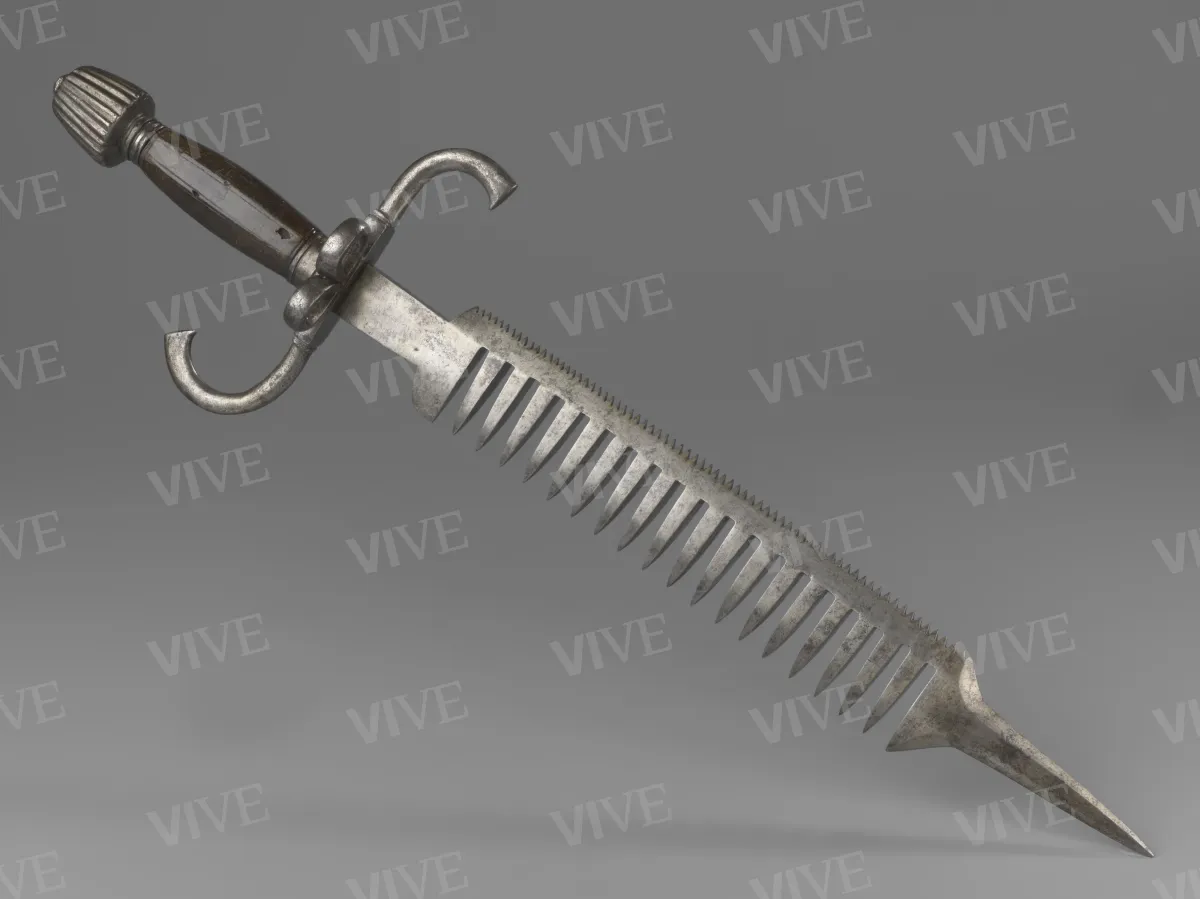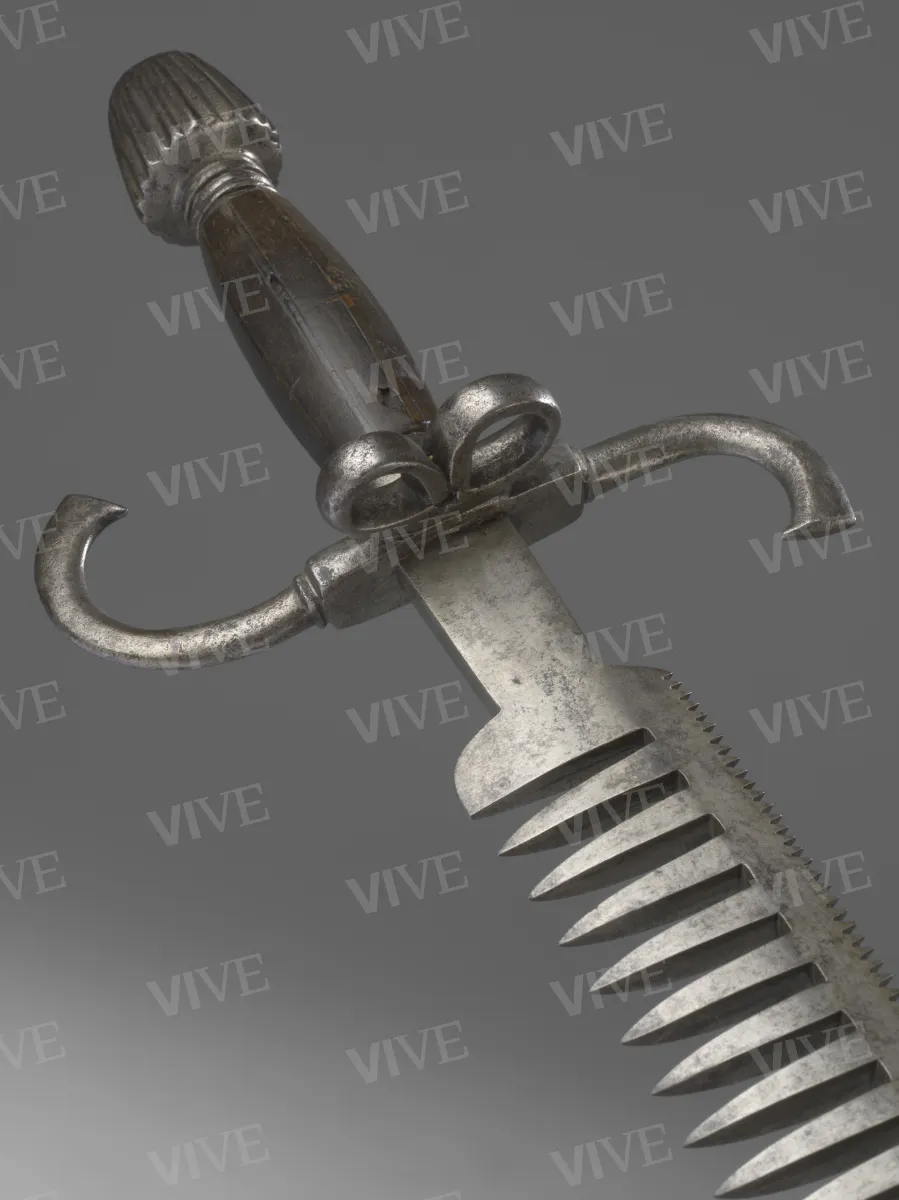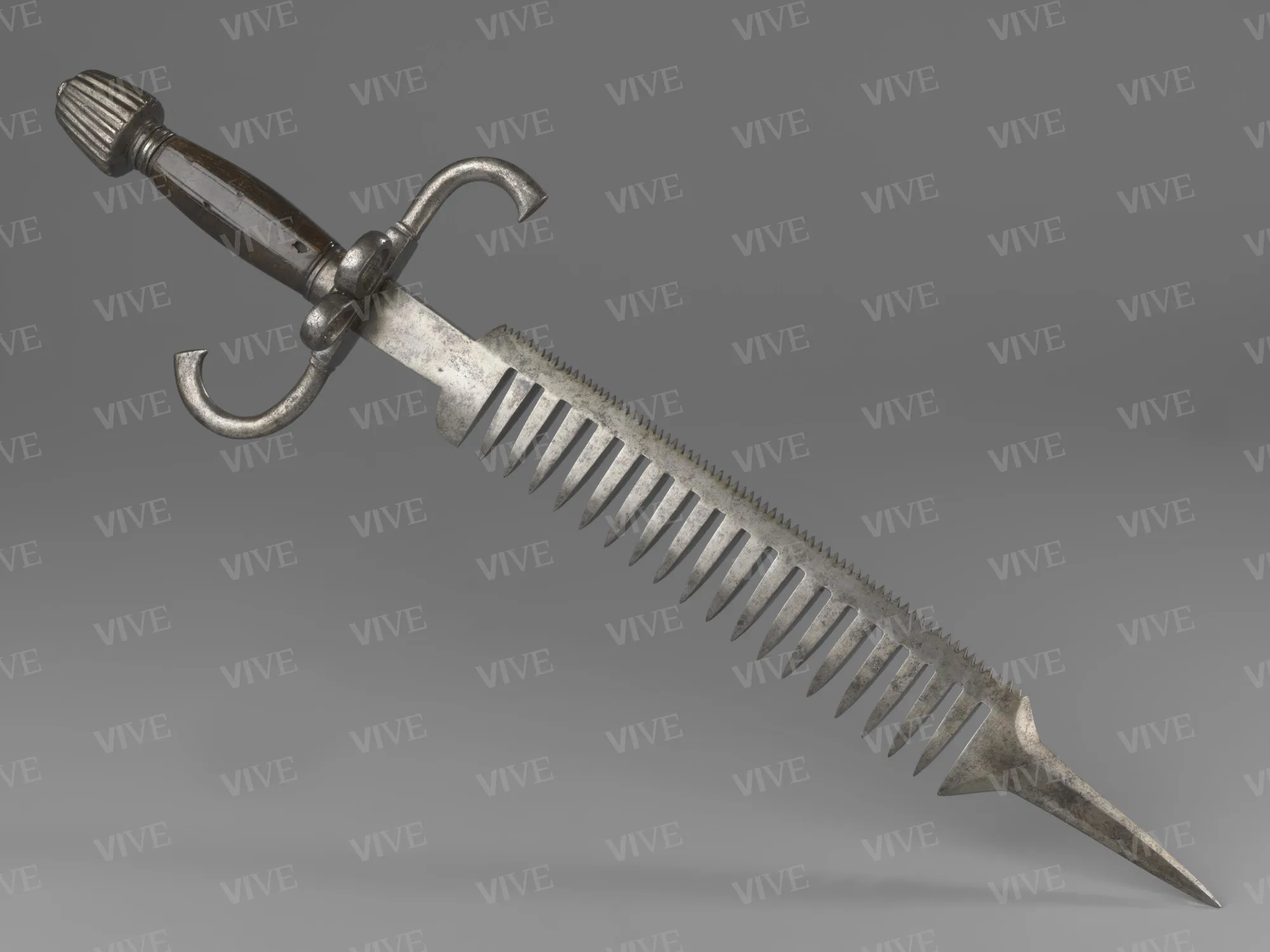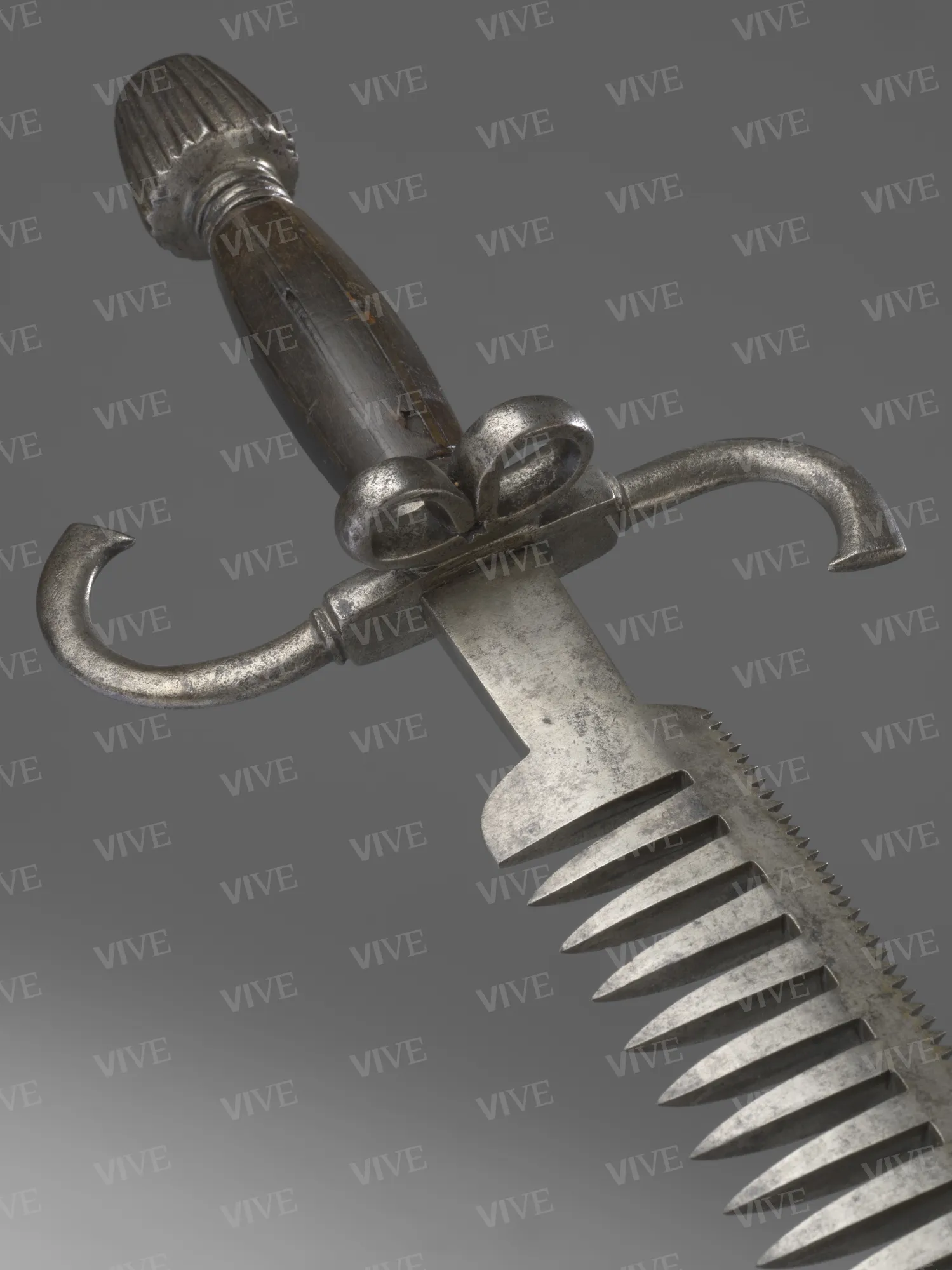Swordbreaker dagger
Northern Italian production Late 16th–early 17th century
This dagger is a short-bladed weapon with a double edge, designed to function as a “swordbreaker,” that is, it could hook an opponent’s blade to break it or disarm them. The craftsmanship indicates that it was likely produced in northern Italy, possibly the result of Spanish production in the Duchy of Milan, between the late sixteenth and early seventeenth centuries.
This dagger is a short-bladed weapon with a double edge, designed to function as a “swordbreaker,” that is, it could hook an opponent’s blade to break it or disarm them. The craftsmanship indicates that it was likely produced in northern Italy, possibly the result of Spanish production in the Duchy of Milan, between the late sixteenth and early seventeenth centuries.
Details of work
Catalog entry
The dagger is a compact bladed weapon, akin to a sword, typically featuring two edges—both sharp blades—along each side of its forged metal structure (Gelli 1900, 173–176; Oakeshott 2012, 225–235). However, the particular object under examination deviates from this standard configuration. Instead of smooth, sharp edges, one side is equipped with dense, minuscule teeth, while the other side features eighteen significantly longer and thicker teeth, characterized by an elongated pyramidal shape. The tip of the dagger, possessing a quadrangular cross-section, is both lengthy and pointed. This unique comb-shaped blade is attached to an S-shaped hilt, which has two metal slots on one side and a very simple decoration on the other, consisting of a wavy line made by dots impressed into the metal. The hilt is attached to a wooden handle ending in a grooved truncated cone-shaped metal pommel (di Carpegna 1969, 53-54, n. 306). The particular shape of this dagger is due to its function as a “swordbreaker” or “attack dagger.” The weapon was used in battle to confront soldiers armed with swords in order to wedge the blade between the longest teeth of the dagger, which, once twisted, could pull the sword out of the enemy’s hand or break it. One side of the dagger is equipped with a serrated blade designed for combat, while the other features a comb intended to counter enemy swords. The dagger, which lacks any markings indicating its place of manufacture, has been attributed to German origin by Nolfo di Carpegna and dated to the early seventeenth century based on its resemblance to two specimens housed in the Wallace Collection in London. Subsequent studies have relinked these items (inv. A867 and inv. A868) with a northern Italian manufacturing region, while retaining their early seventeenth-century dating (Peterson 1968; Boccia and Coelho 1975, nos. 525–526). The Victoria & Albert Museum in London houses a blade very similar to the one discussed here (inv. M.1-1946, in Blair 1962, fig. 24), attributed to Spanish craftsmen from the late sixteenth century who were influential in Milan during the latter half of that century. Considering the absence of marks and its resemblance to the example at the Victoria & Albert Museum, the dagger in the Museo di Palazzo Venezia may also originate from the northern Italian region around the turn of the sixteenth and seventeenth centuries.
The weapon originates from the collection of Prince Ladislao Odescalchi (1846–1922). It was acquired by the Italian state in 1959 and subsequently housed in the Museo di Palazzo Venezia in 1969. This item was not part of a family armory but rather the result of targeted acquisitions from domestic markets in Florence and Rome, as well as international markets in Paris and London, starting in the late nineteenth century, driven by Odescalchi’s personal preferences (Barberini 2007; Fossà 2007).
Giulia Zaccariotto
Entry published on 12 June 2025
State of conservation
Good.
Provenance
Collezione Ladislao Odescalchi (Odescalchi, no. 135);
acquired by the Italian state, 1959;
Rome, Museo Nazionale di Palazzo Venezia, 1969.
Exhibition history
Rome, Museo Nazionale di Palazzo Venezia, Antiche armi dal sec. IX al XVIII. Già Collezione Odescalchi, May–July 1969.
References
Gelli Jacopo, Guida del raccoglitore e dell’amatore di armi antiche, Milano 1900;
Blair Claude, European and American Arms, c. 1100-1850, London 1962;
Peterson, Harold, Daggers and Fighting Knives of the Western World. From the Stone Age till 1900, London 1968;
di Carpegna Nolfo (a cura di), Antiche armi dal sec. IX al XVIII. Già Collezione Odescalchi, catalogo della mostra (Roma, Museo Nazionale di Palazzo Venezia, maggio-luglio 1969), con schede a firma del curatore, Roma 1969, p. 53, n. 306;
Boccia Lionello Giorgio, Coelho Eduardo Teixeira, Armi bianche italiane, Milano 1975;
Barberini Maria Giulia, La collezione Odescalchi di armi antiche: storia della raccolta del principe Ladislao, in «Bollettino d’arte», s. VI, XCI, 2006 (2007), 137/138, pp. 101-114;
Fossà, Bianca Studio conservativo delle armi e armature Odescalchi. Nuove metodologie per la schedatura di una collezione, in «Bollettino d’arte», s. VI, XCI, 2006 (2007), 137/138, pp. 115-142;
Oakeshott, Ewart, European Weapons and Armour. From the Renaissance to the Industrial Revolution, Woodbridge 2012;














